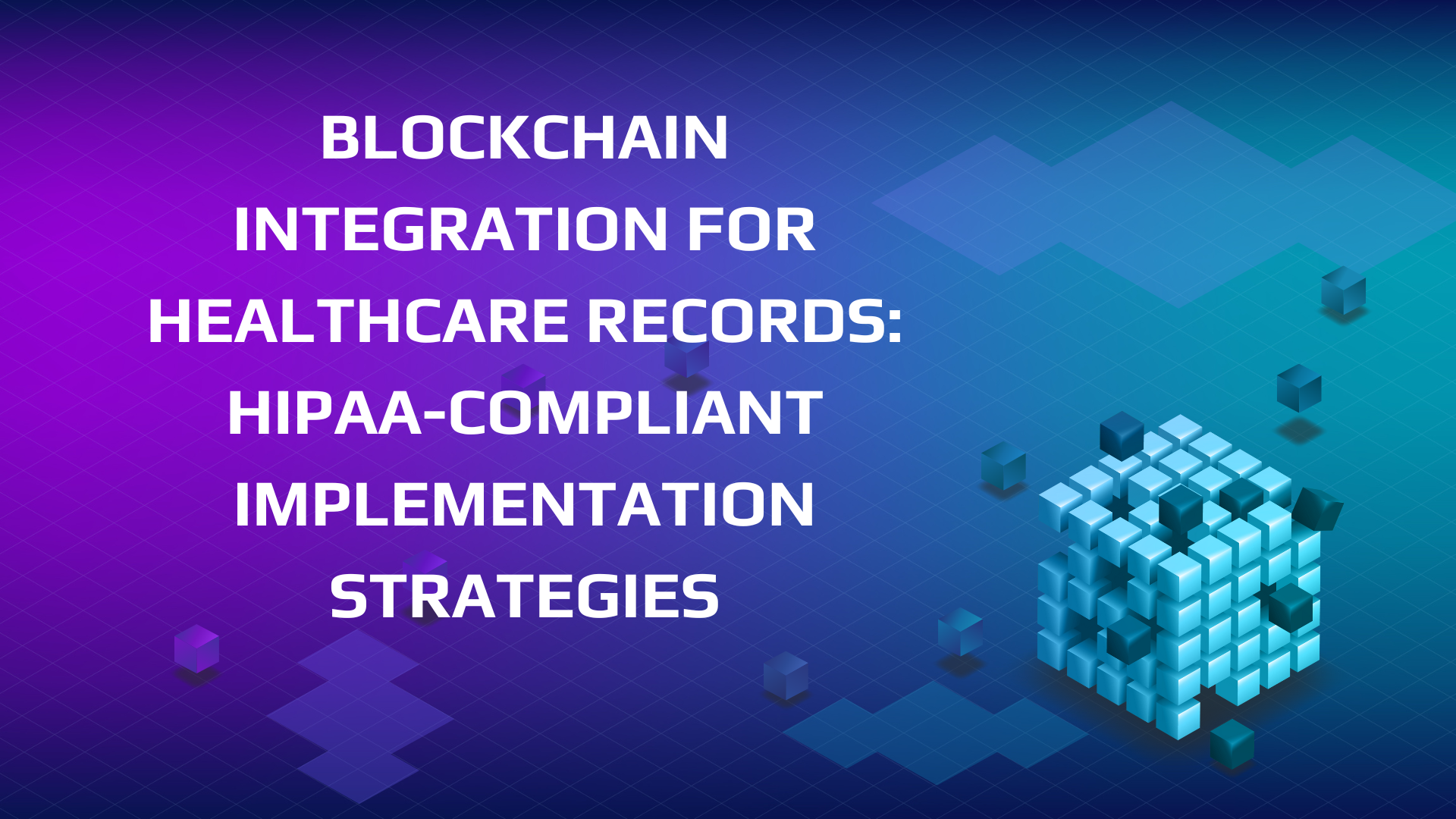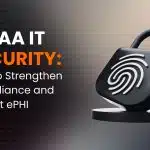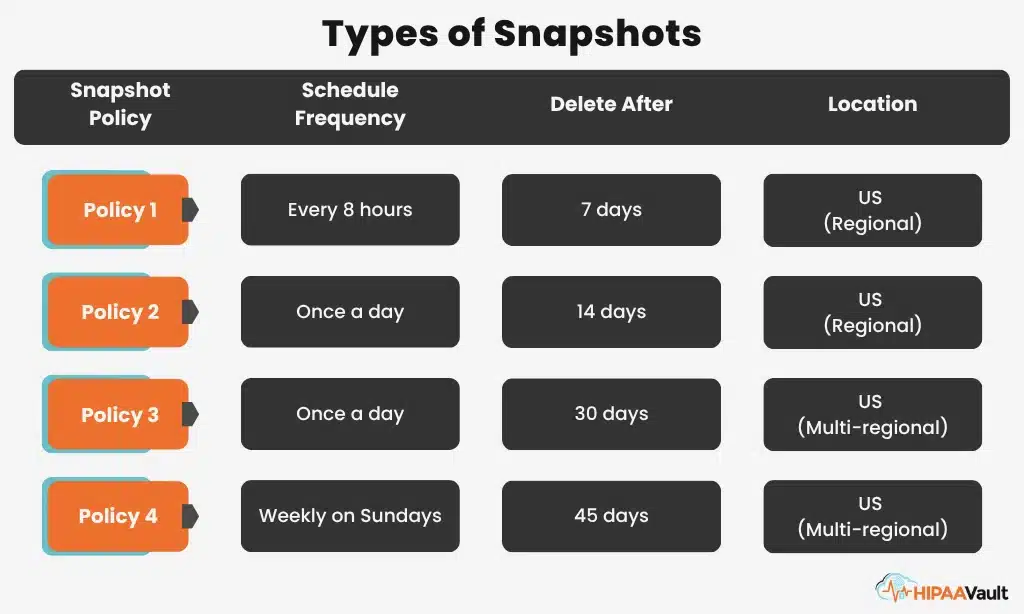The healthcare industry faces a persistent challenge: patient records are often fragmented across disparate systems, and data breaches are all too common. As Wired observed, “the vast majority of hospital systems still can’t easily (or safely) share their data”wired.com. This fragmentation leads to inefficiencies, medical errors, and security risks. Against this backdrop, blockchain technology has emerged as a promising solution for healthcare interoperability. By using a secure medical blockchain, providers can create a unified, tamper-evident ledger of patient data. Recent trends, including federal blockchain initiatives and industry pilots, highlight how blockchain could transform healthcare records. This article explores the advantages of blockchain in healthcare, addresses HIPAA compliance challenges, surveys real-world use cases, and outlines practical implementation strategies – all while emphasizing patient data privacy and HIPAA-compliant architecture.
Why Blockchain is Transforming Healthcare Records
Blockchain offers a fundamentally different approach to managing health data. Its decentralized architecture distributes trust among many nodes (“many witnesses are better than one” instead of relying on a single data custodian. In practice, this means no single point of failure or control – multiple participants (e.g., hospitals, labs, payers) each hold a copy of the ledger. A peer-to-peer blockchain network ensures data is immutable: once a record is written and time-stamped, it cannot be altered without detection. This immutability aligns with HIPAA’s integrity rule, guaranteeing that medical histories and test results remain consistent over time.
Critically, blockchain transactions are cryptographically secured. HHS notes that blockchain can provide “improved confidentiality” while enabling broader authorized access to patient datahhs.gov. In a healthcare context, this means sensitive information is protected by encryption and digital signatures, yet the system can still share verified data across organizations. Newer blockchain platforms also incorporate smart contracts, programmable agreements that automate processes (e.g., claims adjudication or consent management) without human intervention. As researchers Gordon and Catalini explain, blockchain has “particular appeal to health data given its emphasis on sharing, distribution, and encryption”pmc.ncbi.nlm.nih.gov. In essence, blockchain can turn patient data into a patient-centric, distributed ledger, where the patient (or authorized parties) control who can add or view their records.
Another key benefit is blockchain’s built-in auditability. Every action on the ledger – from record updates to access events – is logged in an immutable chain. HIPAA mandates detailed audit trails, and a blockchain inherently provides a tamper-evident log. This transparency can help reduce fraud: for instance, a blockchain solution could flag discrepancies automatically if a provider tries to claim a service that wasn’t recorded on the ledger. As HHS observes, blockchain in healthcare is expected to yield “better quality and more trustworthy … services” and “less fraud”hhs.gov. In summary, healthcare blockchain networks offer distributed trust, strong encryption, and automated audit trails – properties that directly address many of today’s data integrity and security challenges in electronic health records (EHRs).
HIPAA Compliance Challenges and Blockchain Solutions
Adopting blockchain for patient records requires careful design to meet HIPAA rules. Key challenges include: Access Controls, Data Retention, Encryption, and Auditability.
- Access Control: HIPAA requires strict, role-based access to protected health information (PHI). By default, public blockchains (like Bitcoin) are open to all participants, which conflicts with HIPAA’s “minimum necessary” principle. The solution is to use permissioned blockchains. In a permissioned network, only authenticated members (e.g., verified hospitals, insurers, labs) can join and view transactions. Each user is granted specific roles and permissions, ensuring unauthorized parties cannot see PHI. (For example, a private blockchain node could encrypt data so only certain wallets or keys can decrypt it.) Implementing multi-factor authentication, off-chain identity services, and permissioned consortium networks helps ensure only legitimate healthcare entities access the ledger.
- Data Integrity vs. Mutability: Blockchain’s immutability ensures record integrity, but HIPAA also requires that errors in PHI be amendable. On a pure blockchain, deleting or changing data is infeasible. The compromise is a hybrid architecture: keep the original PHI off-chain in a secure database, and store only hashes or pointers on-chain. In practice, this means each blockchain transaction might contain an encrypted hash of a patient record plus metadata (e.g., timestamp, record ID), while the actual medical data remains in a traditional database. If a correction is needed, healthcare providers update the off-chain record and write a new entry to the ledger (providing a new hash), rather than deleting history. This preserves a transparent audit trail of changes while still allowing necessary updates to patient files.
- Encryption and Secure Storage: HIPAA mandates PHI encryption at rest and in transit. Blockchain transactions are inherently hashed, but raw PHI must never be placed on a public ledger unencrypted. Best practice is to encrypt any sensitive data before it touches the blockchain. In a hybrid system, all PHI is stored in a secure, HIPAA-compliant cloud or data center (for example, using HIPAA Vault’s managed cloud servers). Data in motion (e.g., when syncing EHR databases or updating the ledger) should use strong TLS/SSL encryption and VPN tunnels. Regular key rotation and secure key management further protect patient data.
- Audit Controls: By design, blockchain aligns with HIPAA’s audit requirements. Every block includes a timestamp and the cryptographic signature of the entity that created it. This provides an immutable, chronological log of who did what and when. Healthcare auditors can trace any change back through the chain, helping ensure accountability. That said, organizations should also integrate the blockchain audit logs with their HIPAA audit tools, to monitor for unusual access patterns or attempted breaches in real time.
In summary, while blockchain introduces new architectural constraints, a thoughtfully designed on-chain/off-chain model – using permissioned chains, encryption, and robust access control – can satisfy HIPAA standards. Partnering with HIPAA compliance experts and hosting providers ensures these safeguards are correctly implemented.
Real-World Use Cases
Though still emerging, several pilots and studies illustrate blockchain’s potential in healthcare. One notable example is MedRec, an MIT-led project that piloted a blockchain-based EHR system at Beth Israel Deaconess Medical Center. In that trial, the team used a permissioned blockchain to log six months of inpatient and outpatient medication data. According to Wired, the system “recorded blood work records, vaccination history, prescriptions, and other therapeutic treatments” across two separate hospital databases, and the results were “so positive that [the team] is already starting to plan more pilots”wired.com. This demonstrates that even linking existing EHR silos via blockchain can improve data sharing without altering hospital workflows.
Blockchain was also recognized by federal health agencies. In 2016, the Office of the National Coordinator for Health IT (ONC) ran a blockchain challenge. MedRec was among the winners, alongside submissions from the Mayo Clinic and insurer Humanawired.com, underscoring industry interest. That same era saw the FDA announce a research partnership with IBM Watson to explore using blockchain for safely sharing clinical trial data and EHR informationwired.com. These initiatives show that major healthcare players are investing in blockchain for interoperability and data integrity.
Beyond EHRs, blockchain use cases span the healthcare ecosystem:
- Clinical Trials: A research group demonstrated a private Ethereum blockchain for coordinating trial recruitment and data. They implemented a “master smart contract” that matched patients to trials based on inclusion/exclusion criteria, with each site inputting patient records under permissionpmc.ncbi.nlm.nih.gov. This created a secure, auditable stream of trial data, reducing the risk of tampering in long-running studies.
- Pharma Supply Chain: Industry consortia (such as MediLedger) are building blockchain networks to track pharmaceuticals from manufacturing to pharmacy shelf. By logging each transaction on-chain, stakeholders can verify drug provenance and prevent counterfeits. (For example, blockchain records could ensure that a vial’s serial number matches its legitimate origin.)
- Claims & Billing: Smart contracts on a blockchain could automate insurance claims. Early pilots have explored encoding policy rules so that, when a hospital records a claim on-chain, payment is triggered automatically if conditions are met. This not only speeds up reimbursements but also creates an immutable record of billing events, reducing fraud.
In practice, many of these use cases are still in pilot phase, but they confirm blockchain’s value. As one expert noted, blockchain’s core properties address long-standing healthcare challenges: decentralized trust bridges data silos, encryption enhances patient data privacy, and immutability secures audit trailspmc.ncbi.nlm.nih.gov. Real-world projects—both in research and industry—consistently report that blockchain can increase data sharing while preserving privacy, albeit with careful hybrid design.
Implementation Architecture
A robust architecture for HIPAA-compliant blockchain involves a hybrid on-chain/off-chain design. In this model, the blockchain network itself (nodes and consensus) is deployed in a controlled cloud environment, while sensitive PHI remains in encrypted off-chain storage. One approach is as follows:
- Blockchain Layer (On-Chain): Set up a permissioned blockchain network (for example, on Hyperledger Fabric or R3 Corda) hosted on HIPAA-compliant cloud infrastructure. Each participating organization runs one or more nodes. The blockchain stores transaction metadata, smart contract logic, and cryptographic hashes of health records. Because only hashes or pointers are on-chain, the ledger has no raw PHI. For example, a block might record “PatientID-XYZ, RecordHash-ABC123, DateTime, ProviderID”, without including the actual record data. To maintain performance, use an efficient consensus protocol like Proof-of-Authority or Raft that can handle high transaction volume without massive energy use.
- Data Storage Layer (Off-Chain): Actual medical records (EHR data, images, lab results) are stored in a secure database or file store. This could be a HIPAA Vault-managed server – for example, a HIPAA Linux hosting instancehipaavault.com or a HIPAA-compliant database on Google Cloud (via HIPAA Enterprise hostinghipaavault.com). All PHI at rest is encrypted with keys controlled by the organization. When a record is updated, the database assigns it a new hash and writes that hash to the blockchain via a transaction. If a record must be deleted for compliance, it’s simply removed from the off-chain store; the on-chain log still shows its prior existence (often as a “tombstone” entry) but contains no decryptable data.
- Smart Contracts & API Layer: Smart contracts manage rules and permissions. For example, a smart contract might enforce that a new patient record entry on the blockchain can only be created by a provider with the right role. APIs connect the blockchain to existing systems: for instance, a hospital’s EHR software calls a blockchain API whenever it creates a new encounter, triggering a transaction to add a record hash to the chain. This layer also includes identity management (certificate authorities) and key management for encrypting/decrypting data.
- Key Management & Encryption: A central key management service (or distributed key management) is used so that private keys never leave secure HSMs (Hardware Security Modules). Each organization might control its own keys. This ensures that even if the blockchain data were leaked, without the keys, the PHI hashes cannot be reverse-engineered. All data in transit between on-chain and off-chain systems is sent over secure channels (e.g., TLS).
HIPAA Vault’s cloud hosting services can supply the underlying infrastructure for this architecture. For example, the entire blockchain network could run on a HIPAA Vault Enterprise Hosting environment (optimized with Kubernetes) while PHI is kept on one or more HIPAA Vault Linux Hosting servershipaavault.comhipaavault.com. Using such managed services offloads much of the compliance burden: the cloud environment is already engineered to meet HIPAA technical safeguards, audit logging, and vulnerability management.
Integration with Existing Systems
Integrating blockchain with current health IT requires careful planning to avoid disrupting workflows. Key strategies include:
- FHIR and EHR Compatibility: Leverage HL7 FHIR standards for data formats and APIs. For example, when creating a blockchain transaction for a patient update, use FHIR resource types (e.g. Patient, Observation) as payload formats off-chain. This ensures that existing EHRs, which often already support FHIR, can interoperate with the blockchain layer. In practice, a patient’s demographic and clinical data stays in the EHR, but a reference (such as a FHIR DocumentReference or binary that is hashed) is noted on-chain. Middleware or adapters translate between the blockchain ledger and the EHR’s database. Over time, EHR vendors may offer plugins or extensions that write to a blockchain ledger using standard FHIR APIs, minimizing disruption to the user experience.
- Data Migration: Legacy records must be carefully migrated. One approach is to use secure, HIPAA-compliant file transfer to load historical data into the new system. For instance, organizations can use a HIPAA Vault sFTP Server to upload encrypted batches of patient files or to synchronize on-premises databases with cloud storage. During cutover, mappings (like patient ID and record hashes) are established so that old records appear on-chain with correct references.
- Minimal Workflow Impact: To minimize change for clinicians, blockchain interactions can occur behind the scenes. For example, when a doctor saves a note in the EHR, an interface server could asynchronously log a summary hash to the blockchain without requiring new user steps. Reports and UIs continue to be served from the familiar EHR system. Any blockchain-related alerts (like consent requests) can be integrated into existing patient portals or apps. Training and documentation should focus on the benefits (e.g., faster records exchange) and new capabilities (e.g., patient consent management) rather than making end users learn “how to use blockchain.”
- Security and Compliance Controls: Existing security systems (identity management, intrusion detection) should extend to the blockchain. For example, if the organization uses SAML/LDAP for single sign-on, ensure that blockchain access also respects these identities. Similarly, ensure that blockchain traffic (e.g. node communications) is permitted only through the organization’s secure network endpoints and firewalls.
By designing integrations that speak standard healthcare languages (FHIR, HL7, DICOM, etc.) and by using secure migration paths (like sFTP) for data, organizations can achieve blockchain EHR integration with minimal disruption to care delivery. Throughout, the focus must remain on preserving patient data privacy and workflow continuity.
Overcoming Organizational Challenges
Even with the right technology, successful blockchain implementation requires organizational alignment. Executive buy-in is crucial: leaders need to understand why blockchain is worth the investment. Pointing to industry data can help; for example, research analysts have estimated that healthcare blockchain solutions could save the industry $100–150 billion per year by 2025 through reduced data breaches, streamlined IT costs, and fraud reductionhealthcareweekly.com. Highlighting pilot success stories (like MedRec) and regulatory endorsements (ONC and FDA initiatives) can also build confidence. In fact, an IBM-sponsored survey found that about 16% of healthcare executives were already planning blockchain deployments in the near termwired.com, indicating a growing acceptance of the technology.
Cost justification often comes down to balancing implementation expense versus long-term savings and risk reduction. Calculate potential cost offsets: fewer hospital readmissions due to better data access, faster claims processing, and lower breach liabilities all factor in. It may help to start with a narrow use case (such as consent management or supply chain traceability) that delivers quick wins. Over time, the network can expand to larger use cases.
Timeline and Governance: Blockchain projects often take 1–2 years to move from pilot to production. Define a phased roadmap with clear milestones. Early phases focus on proof-of-concept and compliance validation; later phases scale the network to more partners. Establish a cross-functional team including IT, compliance officers, legal, and clinical leaders. This team should develop governance policies: who can join the blockchain network, how disputes are resolved, how patient identity is verified, etc. Consider working with third-party consultants or technology partners who specialize in healthcare blockchain to guide the implementation.
Culture and Training: Educate staff about how blockchain will change (and improve) their workflows. For example, staff should understand how patient permissions are handled via smart contracts, or how they can access audit logs for compliance. Holding workshops or bringing in expert speakers can demystify the technology and build enthusiasm.
By proactively addressing these organizational factors – from ROI modeling to phased deployment planning – healthcare organizations can overcome barriers to adoption and pave the way for effective blockchain use.
Implementation Roadmap
A practical roadmap for deploying HIPAA-compliant blockchain in healthcare might include the following steps:
- Readiness Assessment: Evaluate existing IT infrastructure, data architecture, and compliance posture. Identify pain points (e.g., data silos, breach history) that blockchain could address. Review HIPAA requirements and technical gaps.
- Use-Case Selection: Choose a specific pilot project. Common early use-cases include patient consent management, provider credentialing, or supply chain tracking. The use-case should have well-defined data flows and measurable outcomes.
- Technical and Vendor Evaluation: Decide whether to build on an existing blockchain platform (Hyperledger, Ethereum, Corda, etc.) or use a managed service. Engage vendors or partners (for example, a HIPAA-compliant cloud provider like HIPAA Vault) that offer secure hosting and integration services.
- Design Phase: Architect the on-chain/off-chain model and data schema. Define smart contract logic for the use-case. Plan network governance (which nodes, who maintains them, update procedures).
- Prototype Development: Implement a minimal viable product. Set up the blockchain network (typically in a test environment), configure nodes for participating organizations, and develop API connectors to EHR systems.
- Security and Compliance Audit: Conduct a thorough audit of the prototype for HIPAA compliance. Verify access controls, encryption, and logging. Have legal/compliance teams review data flow diagrams to ensure PHI protection.
- Pilot Testing: Run the blockchain solution on real or simulated data with partner organizations. Monitor performance, identify workflow issues, and gather user feedback.
- Iteration and Scaling: Refine the system based on pilot results. Gradually expand the network to more providers, labs, or departments. Update policies and training materials as needed.
- Full Deployment and Monitoring: Roll out the solution in production mode. Continuously monitor for security events, scalability bottlenecks, and compliance adherence. Establish incident response plans for blockchain-specific issues (like key compromise).
At each step, treat HIPAA compliance as a continuous concern. For example, use HIPAA Vault’s managed cloud infrastructure to simplify compliance controls. Document policies and procedures (as required by HIPAA) for the new technology. By following a structured roadmap and iterating carefully, healthcare organizations can migrate from assessment to live operation with confidence.
Conclusion
Blockchain has the potential to revolutionize how healthcare organizations manage electronic records, turning fragmented data silos into a secure, interoperable ecosystem. Its core benefits – decentralized trust, strong encryption, immutable audit trails, and patient-centric control – directly address the interoperability and privacy challenges in healthcare. However, realizing these benefits requires a careful HIPAA-compliant design. Storing PHI off-chain (in encrypted databases on HIPAA Vault’s secure cloud) while putting only transaction hashes on-chain preserves patient data privacy and regulatory compliance.
In summary, successful blockchain integration hinges on a hybrid architecture and tight compliance measures. HIPAA Vault’s enterprise-grade hosting and cloud services (such as its HIPAA Enterprise Hosting and managed Linux servers) provide a foundation for this approach. By combining blockchain’s security features with a trusted HIPAA-compliant hosting environment, healthcare organizations can enhance patient data privacy, streamline data exchange, and improve overall data integrity. The journey involves not just technology, but also planning, governance, and culture change. With a solid implementation strategy and the right partners, healthcare providers can harness a secure medical blockchain to transform patient care in the digital age.








